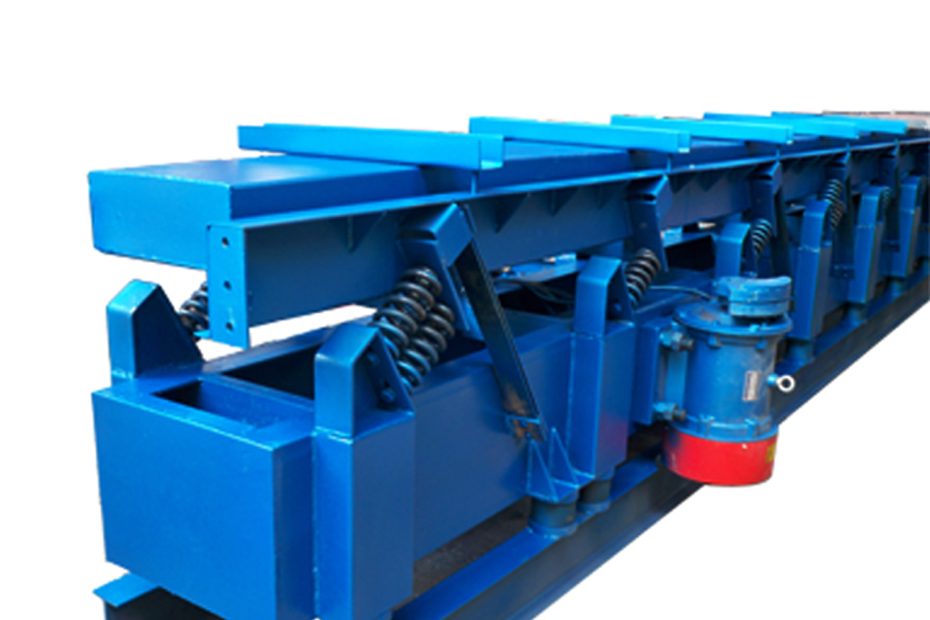Vibrating conveyors are widely used in various industries for efficient material handling. The capacity of a vibrating conveyor, referring to its ability to handle and transport materials effectively, is influenced by several factors. Understanding these factors is crucial for optimizing the conveyor’s performance, ensuring smooth material flow, and achieving the desired throughput.
Material Characteristics
- Particle Size and Distribution:The size and distribution of the conveyed particles directly impact the conveyor’s capacity. Smaller particles tend to pack more densely, reducing the available space for material movement and potentially limiting the conveyor’s capacity. Additionally, variations in particle size distribution can affect material flow and require adjustments in the conveyor’s design parameters.
- Bulk Density:The bulk density of the material, which refers to its mass per unit volume, affects the conveyor’s capacity. Materials with higher bulk densities have a greater mass per unit volume, requiring more power to transport. Lower-density materials, on the other hand, may require adjustments in the conveyor’s design to prevent material fluidization or spillage.
- Angle of Repose:The angle of repose, defined as the maximum angle at which a material remains stable without sliding or flowing, influences the conveyor’s capacity. Materials with steeper angles of repose may have reduced flowability, leading to slower material movement and potentially limiting the conveyor’s capacity. Adjustments in the conveyor’s inclination or design parameters may be necessary to accommodate such materials.
- Flowability:The flowability of the material, which refers to its ability to flow freely and smoothly, is a crucial factor affecting the conveyor’s capacity. Materials with poor flowability, such as cohesive or sticky substances, can cause blockages and hinder material movement. Additional measures, such as surface treatments or design modifications, may be required to enhance flowability and maximize the conveyor’s capacity.
Vibration Parameters
- Vibration Frequency:The vibration frequency of the conveyor impacts its capacity. Higher frequencies generally result in increased material displacement and conveying velocity, leading to higher throughput. However, excessively high frequencies can cause material instability, resulting in reduced conveyance efficiency. Finding the optimal frequency for specific materials is essential to maximize the conveyor’s capacity.
- Vibration Amplitude:The vibration amplitude, referring to the magnitude of the oscillating motion, affects the capacity of a vibrating conveyor. Higher amplitudes typically result in greater material displacement and increased conveyance rates. However, excessively high amplitudes can lead to material instability or spillage. Finding the right balance between amplitude and material stability is crucial for optimal conveyor capacity.

Conveyor Design and Parameters
- Trough Dimensions:The dimensions of the conveyor’s trough directly influence its capacity. A wider and deeper trough allows for greater material volume, resulting in increased capacity. However, the trough dimensions should be balanced to prevent excessive power consumption and material overload.
- Conveyor Speed:The speed at which the conveyor operates affects its capacity. Higher conveyor speeds generally lead to increased material throughput. However, the speed should be carefully controlled to prevent material spillage, excessive wear, and instability. Finding the optimal conveyor speed for specific materials and applications is crucial for maximizing capacity.
- Inclination Angle:The inclination angle of the conveyor affects its capacity by influencing material flow and resistance to motion. A gentle inclination promotes steady material flow, while a steeper inclination may require additional power to overcome increased resistance. Optimizing the conveyor’s inclination angle based on material properties and desired conveyance objectives is essential to maximize capacity.
- Material Containment Measures:Efficient material containment measures, such as skirting systems or side walls, play a role in maximizing the conveyor’s capacity. These measures prevent material spillage or leakage, ensuring that the conveyed material remains within the designated conveying area and optimizing the conveyor’s efficiency.
Conclusion
The capacity of a vibrating conveyor is influenced by various factors, including material characteristics, vibration parameters, and conveyor design. Particle size, bulk density, angle of repose, and flowability impact material behavior and determine the conveyor’s capacity. Vibration parameters, such as frequency and amplitude, require careful calibration to achieve optimal material displacement and conveyance rates.
Conveyor system design considerations, including trough dimensions, speed, inclination angle, and material containment measures, play crucial roles in maximizing capacity and ensuring efficient material handling. By understanding and optimizing these factors, industries can enhance the performance of vibrating conveyors, achieve desired throughput rates, and streamline material handling processes.
